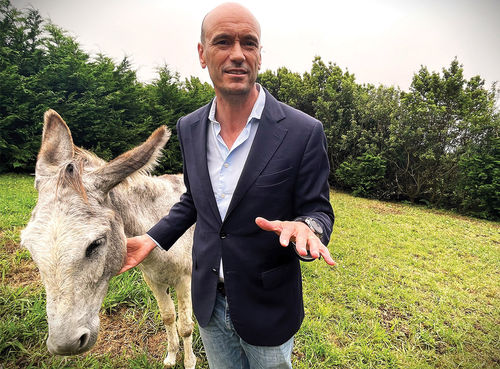
Arnie Weissmann
Overtourism is the problem. Andy Warhol may have the solution.
Before Warhol began silk-screening giant Campbell's Soup cans onto canvases, "abstract expressionism" dominated the art world. Think Jackson Pollock. Think bold colors and nongeometric shapes. Think of the comment, "My 4-year-old could have done that."
Warhol and his pop art peers not only developed an artistic style that was accessible to the nonart world, they raised an appreciation for art that was hiding in plain sight. For Warhol, there was artistic inspiration in the aisles of grocery stores. In a Pepsi bottle cap. In the curve of a banana.
Perhaps there's a lesson here for the travel industry. For centuries, travel itineraries have featured visits to famous structures, museums and sites: the pyramids, the Louvre, the Trevi Fountain. The masses have certainly understood this all too well, and today a visit to many of them requires either a timed entrance or an encounter with that unique form of misery known as overtourism.
But parallel to Warhol's discovery that there is art in common objects, there are likewise intriguing travel experiences hiding in plain sight. I've discovered that, just as art is latent in commercial design, local industrial enterprises can hold intrigue for visitors.
Take, for example, the donkey milk farm on the Azores island of Terciera.
I have recently become a big fan of the Azores, an autonomous region of Portugal situated in the Atlantic, about two-thirds of the way to continental Europe. With the recent addition of nonstop flights from New York, it takes me less time to get there than to Los Angeles and less than half the time it takes to fly to Hawaii.
I've been three times. During my first visit, I accepted what I thought was an odd invitation from the tourist board to visit a lab and factory for a health supplement company. It turned out to be fascinating.
Last month on my first visit to Terciera, I toured Asinus Atlanticus, a donkey milk farm. Similar to the health supplement factory (or as it's known formally, the Microalgae Interpretation Center), the donkey milk farm is in its early stages of development as a tourist attraction.

Marcos Couto, CEO of Asinus Atlanticos, prepares to bring Edwina to the milking stall. Photo Credit: Arnie Weissmann
Its chief executive, Marcos Couto, is working out a 60- to 90-minute tour that will include petting, brushing and milking donkeys as well as understanding the uses of donkey milk, which I found unexpectedly riveting.
Donkey milk, it turns out, eases some of the symptoms of a rare pediatric syndrome called Pandas, short for pediatric autoimmune neuropsychiatric disorders associated with streptococcal infections. It's unknown which components of donkey milk are helpful, but it's been shown that milk from an endemic Azorean breed of donkeys is most effective. It contains more vitamin C and iodine than donkey milk from other locations, and Couto suspects that's related to the farm's location and resulting environmental impacts on the soil and grass.
Milk from Asinus Atlanticus ("Atlantic donkey" in Latin) is freeze-dried in a local lab, packaged and sold through a distributor in Oklahoma, where most of it ends up in a research program in California.
The other use for donkey milk is for cosmetics. Cleopatra was said to bathe in donkey milk as a beauty treatment. (She also rubbed crocodile excrement into her skin, perhaps a bridge too far for even the most experimental modern spa.)
Couto works with a cosmetics company in France to produce a range of donkey milk beauty products, including body lotion, shower gel and face and hand creams.
While the background on the uses of donkey milk might interest adults, the donkeys themselves, gentle and docile, would no doubt attract kids.
In addition to being given a chance to milk a donkey named Edwina -- I didn't do too well at it -- I was given a sample of the milk to taste.
It is surprisingly sweet, if a bit thin. (Couto said it is very similar to human milk.)
I asked if donkey cheese was ever made. Each donkey only produces about a half-gallon of milk per day, Couto said, and its consistency is thin because there's very little fat. Yes, donkey cheese is made, but it's not cheap. There's a farm in Serbia that produces and sells it for 1,000 euro per kilogram. Tennis star Novak Djokovic is reportedly looking at adding it to the menu in a chain of restaurants he owns.
Most donkey cheese that's sold is actually diluted with camel or goat milk, he added, to bring the cost down.
To be sure, there are many other attractions in the Azores: whale watching, birding, volcano climbing, hot springs and other thermal attractions. And except for summer high season, it's not yet crowded.
Where to go for my next visit there? I'm not sure, but I hear that passion fruit-flavored gin is made on Faial island. Perhaps that distillery gives tours.